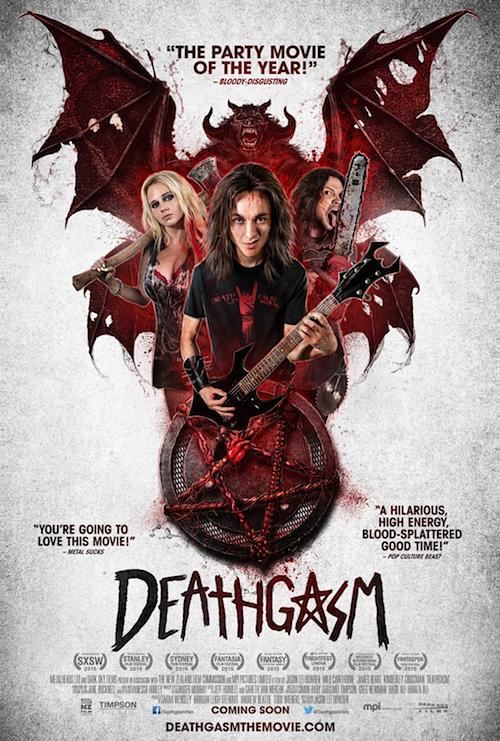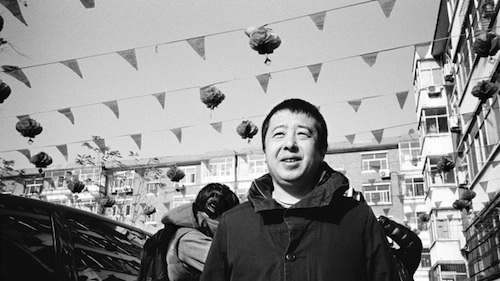By Joe Bendel. The “Love Jihad” or “Romeo Jihad” phenomenon, in which young Muslim men seduce non-Muslim women and teens, enticing them into marriage and conversion, culminating in emotional abandonment and in some cases outright exploitation, has been hotly debated in India, but there are precedents in the West, as well. Betty Mahmoody’s ordeal documented in Not Without My Daughter could be considered an early example. Such is also the case when Alain’s daughter elopes with a budding jihadist, irrevocably fracturing his French family in Thomas Bidegain’s Les Cowboys, which screens as a Main Slate selection of the 53rd New York Film Festival.
Alain, his wife Nicole, sixteen year-old daughter Kelly, and young son “Kid” are French western aficionados, who enjoy kicking up their heels and singing cowboy songs at hoedowns. However, this 1994 round-up will be their last as a family. Much to their shock, Kelly has planned to elope with her secret boyfriend, Ahmed, the radicalized son of assimilated parents. With the help of his Islamist network, they cover their tracks quite thoroughly.
For years, Alain tirelessly searches for them, dragging the obedient Kid along to watch his back. Riffing on John Ford’s The Searchers and Paul Schrader’s Hardcore, Bidegain and co-screenwriter Noé Debré will take Alain into dangerous “No-Go Zones,” before the media was denying their existence. Ultimately, the relentless quest will eventually destroy Alain.
 The Kid will duly pick up his standard, but he will try to be smarter about it. Nevertheless, Kelly’s reported proximity to radical Islamist circles greatly alarms him following the World Trade Center bombings and the London 7/7 attacks. Eventually, he will join an NGO relief organization active in the Middle East, hoping to glean information regarding her whereabouts. A mysterious American ransom-fixer might be able to help, but he demands the Kid ride shotgun on his latest dodgy mission first.
The Kid will duly pick up his standard, but he will try to be smarter about it. Nevertheless, Kelly’s reported proximity to radical Islamist circles greatly alarms him following the World Trade Center bombings and the London 7/7 attacks. Eventually, he will join an NGO relief organization active in the Middle East, hoping to glean information regarding her whereabouts. A mysterious American ransom-fixer might be able to help, but he demands the Kid ride shotgun on his latest dodgy mission first.
Les Cowboys looks like it might be the sort of film the director lost control of, in a good way. Like John Wayne in The Searchers, Alain is intended to be a portrait of corrosive obsession, but François Damiens (playing radically against his lumpy comedic type) humanizes him too effectively. Likewise, everything we learn about Kelly’s subsequent life suggests it is one of profound misery and regret. Sure, there is some kneejerk “Islamophobia” directed at Shahzana, one of Ahmed’s subsequent wives, forced by circumstance to accept sanctuary with the Kid in France. Yet the scene is question comes across as a clichéd and obligatory tack-on. However, their evolving relationship is arguably rather bold and touching, in a haram kind of way.
Those who know Damiens from frothier films like Heartbreaker or Delicacy may not recognize him as the grizzled Alain, but his performance deserves to be an award-winning career turning point. Finnegan Oldfield’s performance as the older Kid is also quite accomplished, depicting the maturation process with rarely seen complexity and sensitivity. Yet, the chemistry he develops with the arresting Ellora Torchia’s Shahzana is the film’s real knockout punch. As an additional bonus, John C. Reilly hams it up just enough, but not too much as the American security contractor.
Bidegain crafted Les Cowboys with unusual subtly. Details like when and where Kelly and Shahzana wear bandanas and headscarves have real significance. It is an uncompromising family tragedy, but it still manages to be deeply satisfying. There are several scenes that truly stay with you. Surprisingly highly recommended, Les Cowboys screens tonight (10/2) at the Gilman Theater, as part of this year’s NYFF.
LFM GRADE: B+
Posted on October 2nd, 2015 at 3:11pm.






